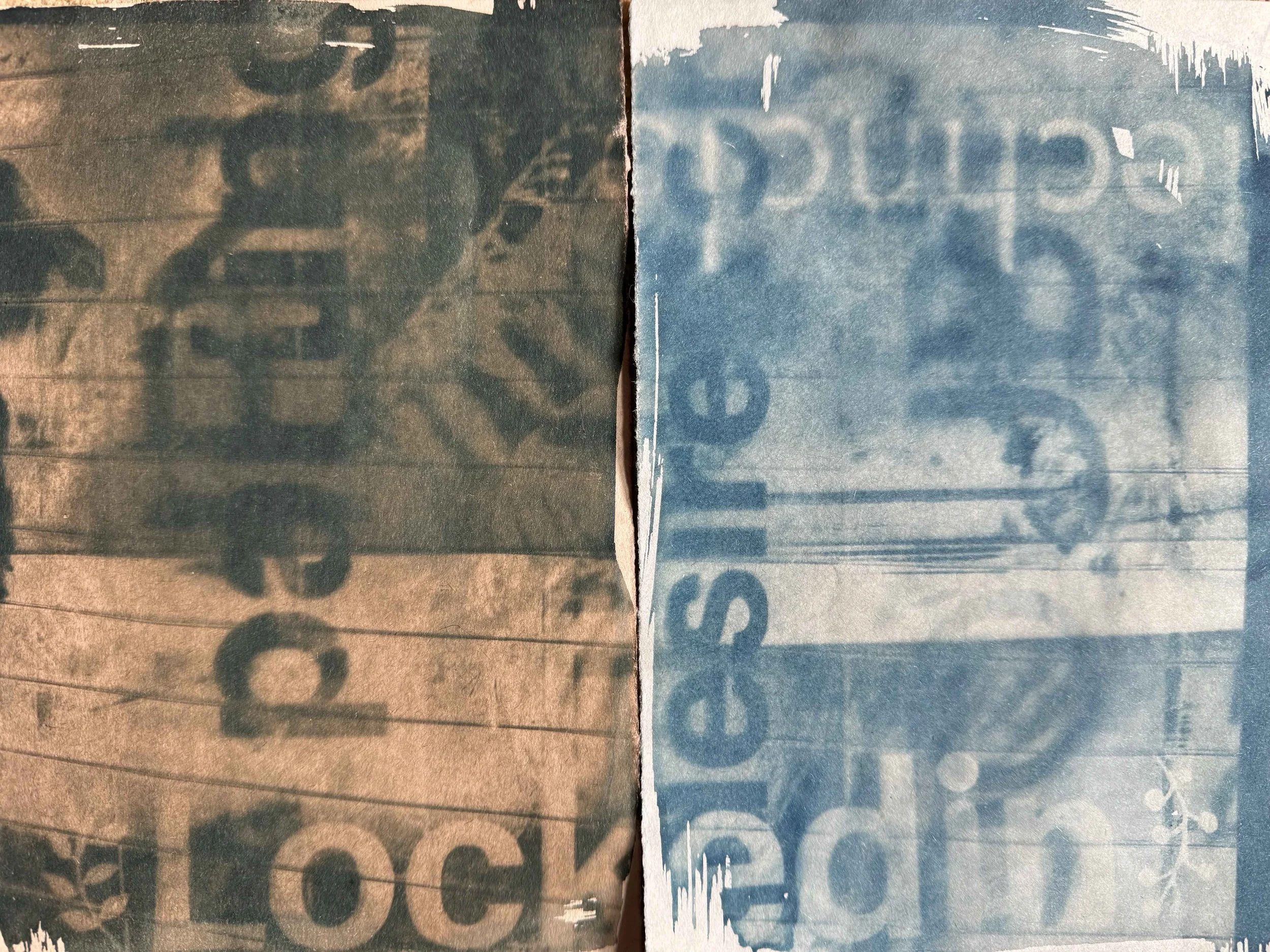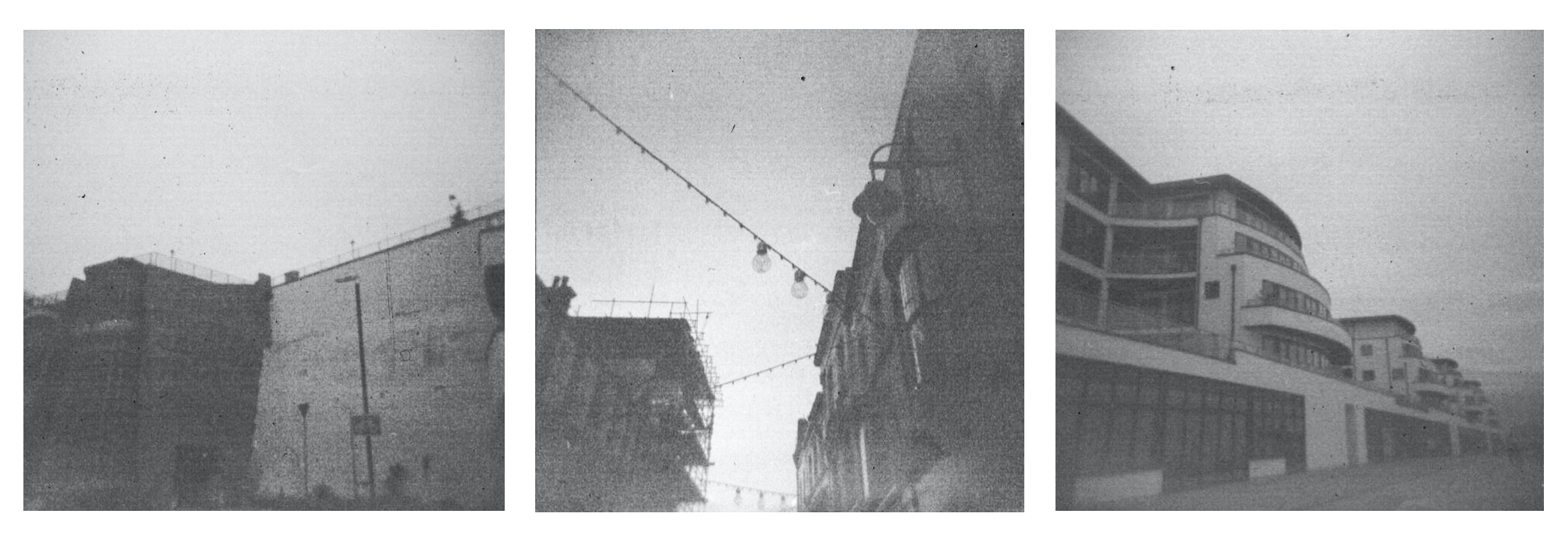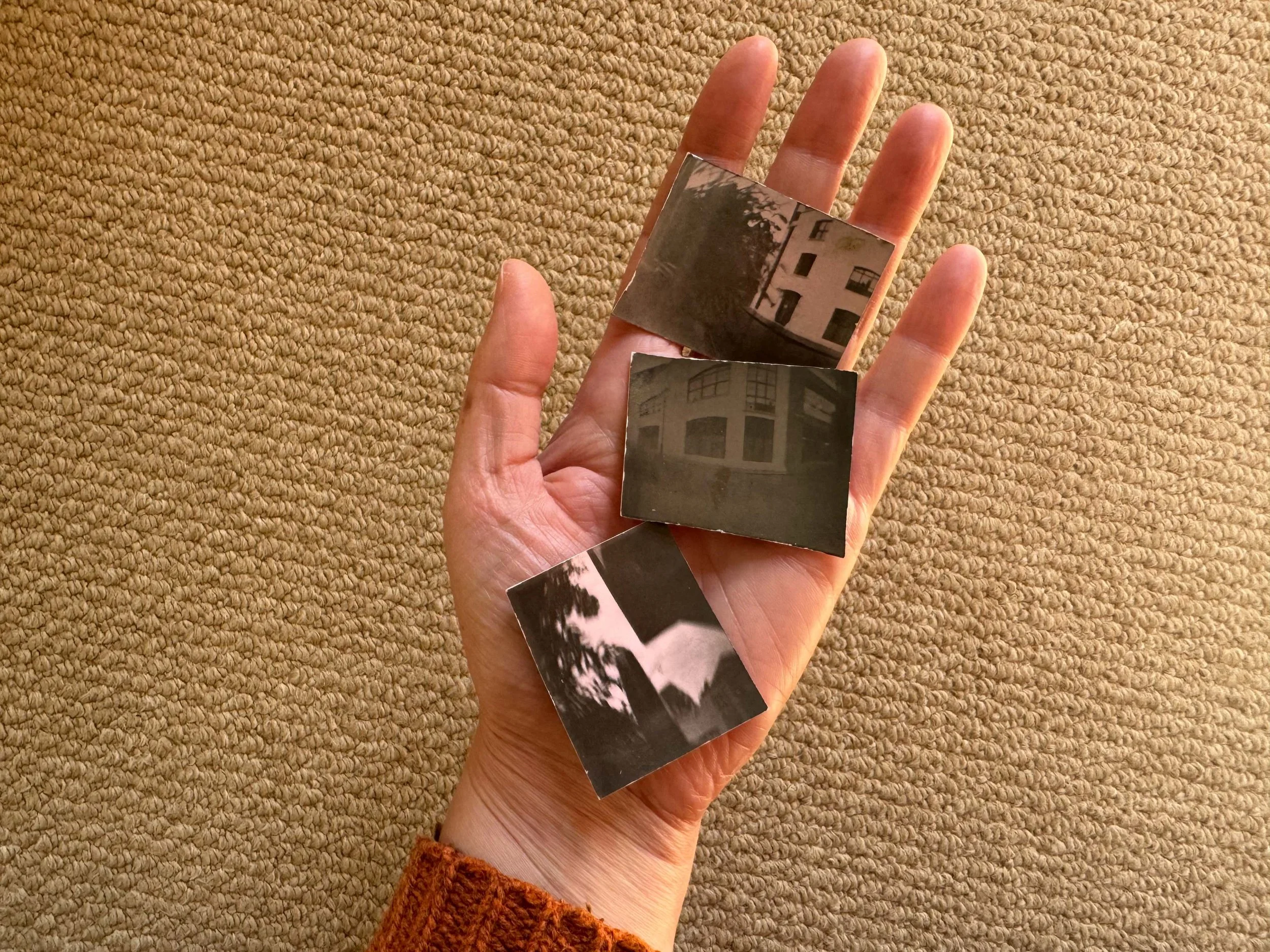DYCP Progress: Learning
One of the milestones I set out in my DYCP proposal was “to have documented my learning and work in progress and published as a blog” at the end of the first section of the project (which I loosely split into three sections - learning, experimenting and creating). I’ve been procrastinating wildly about this. Not because I haven’t learnt anything - far from it! - but more because I’ve learnt such a lot, it feels too much to put into a blog post. I have reams of notes and photos from an amazing week of workshops with the Sustainable Darkroom in London - gum printing with madder, botanical cyanotype toning, plant-based developers, pinhole cameras, and super 8 filming and developing in food waste - plus fascinating talks covering everything from the philosophy of the Sustainable Darkroom (Donna Haraway and Anna Tsing got a mention in the first talk I attended and I realised I was in the right place!), through to the important practicalities of dealing with waste. I’ve spent a brilliant day with sustainable photography expert Melanie King at her studio in Ramsgate, having 1:1 tuition on developing film using seaweed. And I’ve taken part in a fantastic cyanotype animation course with the Sustainable Darkroom’s Edd Carr. I’ve also joined the Sustainable Darkroom and the Land Art Collective, and have attended various talks and members meetings online, all of which have been inspiring and informative. So as I say - too much to put into one blog post!
So I’m not going to go into all the details and specifics of what I’ve learnt - if you’re interested in learning about environmentally-friendly analogue photography processes, you can check out the Sustainable Darkroom and Melanie King’s websites for loads of helpful info and tutorials etc.
Instead I’m going to share more broadly what I’ve learnt in relation to my practice, some images of experiments/work in progress, and thoughts and ideas about what’s next…
Botanically-toned cyanotypes from Sustainable Darkroom workshop with Anna Lukala. L - toned with hornbeam leaves. R - toned with woad.
Lesson 1: These processes are SLOW
As someone who has largely worked with digital processes, this has been a steep learning curve. These processes are SLOW. Making a plant-based developer requires steeping plants in hot water at least overnight. Then there’s the mixing of the plant extraction with the vitamin C and soda crystals, and getting everything to the right temperature. There’s the wrangling of the film onto the spool inside a changing bag, the drop test to ascertain how long it will take to develop, and then the agitating, agitating, agitating (every minute for up to an hour depending on the type of plant). Then there’s washing, and fixing. In a bid to be as sustainable as possible, I’m using salt fix (basically very, very salty warm water) rather than commercial fixative. The advantages are that salt fix stabilises the silver halides in the film rather than stripping them out, so it can be reused forever - which is both cheaper, and kinder to the environment. But it takes time. 48 hours to be precise, with occasional agitating (I usually leave the developing tank in the bath and give it a jiggle every time I pop to the bathroom). Part of me loves this slowness. The way spending an hour agitating a developing tank forces me to be present with what I’m doing - I can’t do anything else except maybe listen to a podcast or the radio. I can’t check my phone as I use it as a timer. I also love the build up to the moment of opening the tank - will it have worked!? (Answer - yes every time, so far, which I’m kind of astounded by!) And, the slowness has its challenges. I’ve been feeling very unproductive compared to my days of digital creating - there is a lot of thought and research that goes into my digital work, but the actual act of making is very quick, and often prolific. Allowing myself to slow down and not constantly be churning out work is very good for me, I’m sure - and it’s taken some getting used to.
Photos of Ramsgate. Medium format film developed in Ramsgate seaweed in 1:1 workshop with Melanie King. Bringing the materiality of the place into the process.
Lesson 2: These processes are seasonal
Another thing that’s making me feel unproductive is that I’ve realised these processes are very seasonal. Anthotypes require the hot, bright sun of summer to develop. Cyanotypes need some sun at least, which is not always forthcoming in the depths of winter in the UK. Plant-based developers need plants that are high in phenols - which happens when plants are active and growing - again, not something that’s happening much in the depths of winter. I did successfully make a developer with rosemary from a friend’s garden in November, but as I really want to explore the materiality of place through my processes (i.e. using plants from the landscape where I’m taking the photographs to create anthotypes, botanical cyanotype toners and developers), I’m having to be patient and wait for those plants to start growing! While this has been challenging (I’m not very comfortable with feeling unproductive it seems!), it does have a beautiful synergy with the cyclical nature of the seasons, and is gently persuading me to pay more attention and attune myself and my practice more closely with the earth’s rhythms. I’ve been trying to allow myself time for ‘wintering’, and while I can feel guilty that I’m not ‘on track’ with my DYCP project, part of the learning of the project has been connecting more deeply with nature, and this means accepting that there will be fallow times in my practice, just as there are in the seasons.
Tiny pinhole photos from Sustainable Darkroom workshop. Direct positive paper, film canister pinhole camera, developed in plant-based developer.
Lesson 3: New directions
Part of the deal with the DYCP is being able to demonstrate a ‘step change’ in your practice. I set out to change from a solely digital practice to a practice encompassing sustainable analogue methods - bringing my processes into greater alignment with my environmentally-focused concepts. I had the idea that I would be learning lots of new techniques which I could weave into my practice, what I didn’t realise was that through learning about other photographers working in this way, I would actually start to think differently about the whole direction I want to take my work.
I’ve long been drawn to creating abstract photography, creating multi-layered images that (hopefully) make people think about our environment in new ways. I’ve never really been drawn to documentary photography - while I appreciate it and enjoy others’ documentary projects, it’s always felt a bit too representational and realistic for me as an artist - it’s a brilliant thing, but not ‘me’. However, through the DYCP I’ve come across many photographers who are bringing together a documentary approach with very creative sustainable analogue techniques - fusing documentary and art, and importantly, allowing the materials and processes to form part of the story. This excites me. Discovering Alice Cazenave’s work on the legacies of photographic silver and Melanie King’s Submerged Landscapes; along with the work of artists such as Lynda Laird and Mandy Williams through the Land Art Collective has made me think differently about the creative possibilities within documentary photography.
The next two stages of my DYCP project (experimenting and creating) are going to be exploring this approach, and I have a couple of project ideas simmering.
Now I just need some sunshine and growing plants!
Still from Sustainable Darkroom Super 8 film workshop. Developed in food waste.
Thank you to Arts Council England for the opportunity to develop my creative practice.




